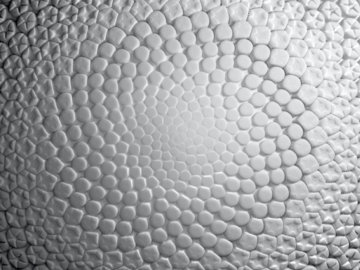April 15, 2021
International research collaboration solves centuries-old puzzle of pattern formation in flower heads

If you’re walking in a field of flowers this summer, look closely at the beautiful patterns in the flower heads. Figuring out how these distinctive and ubiquitous patterns form has puzzled scientists for centuries.
Now, an international team including University of Calgary researchers has solved the problem that stumped so many, including famed British mathematician, computer scientist and theoretical biologist Alan Turing.
The team’s five-year study focused on “phyllotaxis,” the distribution of organs such as leaves and flowers on their supporting structure, which is a key attribute of plant architecture.
The formation of spiral phyllotactic patterns has been an open fundamental problem in developmental plant biology for centuries, due to the patterns’ role in defining plant form, says study co-author Dr. Przemyslaw Prusinkiewicz, PhD, professor in the Department of Computer Science in the Faculty of Science.
“We have cracked this problem,” he says.
The solution we provided is a contribution to basic science. But it was also a thrill to go after a difficult problem which many people couldn’t solve.
The collaboration involved Prusinkiewicz’s UCalgary research group and, from the University of Helsinki in Finland, a group led by Prof. Paula Elomaa.
The team combined tools unavailable to Turing — diverse genetic, microscopy and computational modelling techniques — to explain how phyllotactic patterns of flowers emerge in the flower heads of Gerbera hybrida, a member of the daisy family which also includes sunflower.
They found that phyllotactic patterns in gerbera, whose heads have large numbers (in the order of 1,000) of individual flowers, develop in a different way than patterns in plants with small numbers of organs. Scientists had previously explained those patterns in experimental model plants, such as Arabidopsis and tomato.
algorithmicbotany.org
But the team’s discovery of a novel developmental mechanism brings several new elements to the “traditional” theory of phyllotaxis.
“The patterning is not occurring in a static, pre-formed head structure. It occurs concurrently with the growth of the structure — when the flower head develops — and this plays a major role,” Prusinkiewicz says.
The team’s study, “Phyllotactic Patterning of Gerbera Flower Heads,” is published as an open access paper in the Proceedings of the National Academy of Sciences of the USA.
Interdisciplinary collaboration key to discovery
Prusinkiewicz and his research group, which included study co-authors Dr. Mikolaj Cieslak, PhD, a senior research associate, and PhD student Andrew Owens, developed mathematical models based on experimental data obtained by the group at the University of Helsinki.
“This was exemplary interdisciplinary research and international collaboration. Neither group could have obtained these results working alone,” Prusinkiewicz notes.
The team found that phyllotactic patterns in gerbera are initiated by molecular processes, controlled by a plant hormone called auxin, taking place at the rim of the flower head. These processes occur long before any morphological (structural) changes can be seen.
As the flower head grows, new flowers are added between those previously formed as space becomes available, but they are shifted asymmetrically toward their older neighbouring flowers — producing a zigzag template for new flowers.

Research team, from left to right: Andrew Owens, Philmo Gu, Teng Zhang, Paula Elomaa, Przemyslaw Prusinkiewicz, Mikolaj Cieslak, Jeremy Hart, Alejandro Garcia.
Contributed
The team is the first to observe and report this asymmetry, and to show that it is key to the emergence of the phyllotactic patterns’ mathematical properties. For instance, the flowers are arranged in left- and right-winding spirals that typically occur in “Fibonacci numbers,” where each number is the sum of the preceding ones: 1, 2, 3, 5, 8, 13, 21, 34, 55 . . ..
In a remarkable intersection between mathematics and biology, Fibonacci numbers also appear in the arrangement of leaves on the stems of many plants, the fruit sprouts of a pineapple, the flowering of an artichoke, and the arrangement of a pine cone’s scales.
Phyllotactic patterns are prevalent only in the plant kingdom, unlike simpler spiral patterns which are also found in some animals. There is no scientific consensus on why.
Prusinkiewicz subscribes to a theory that, from a plant’s perspective, it is easy and efficient to grow new flowers in this manner — as the space becomes available.
As a next step, the research team wants to see if the mechanism they discovered is present in a wide range of other plants. They also plan to use computational techniques to “look” inside the flower heads, to connect the phyllotactic patterns visible from the outside with patterns of the plant’s inner vascular system.
The UCalgary team’s research was funded by the Natural Sciences and Engineering Research Council of Canada and the Canada First Research Excellence Fund through the Plant Phenotyping and Imaging Research Centre housed at the University of Saskatchewan.








